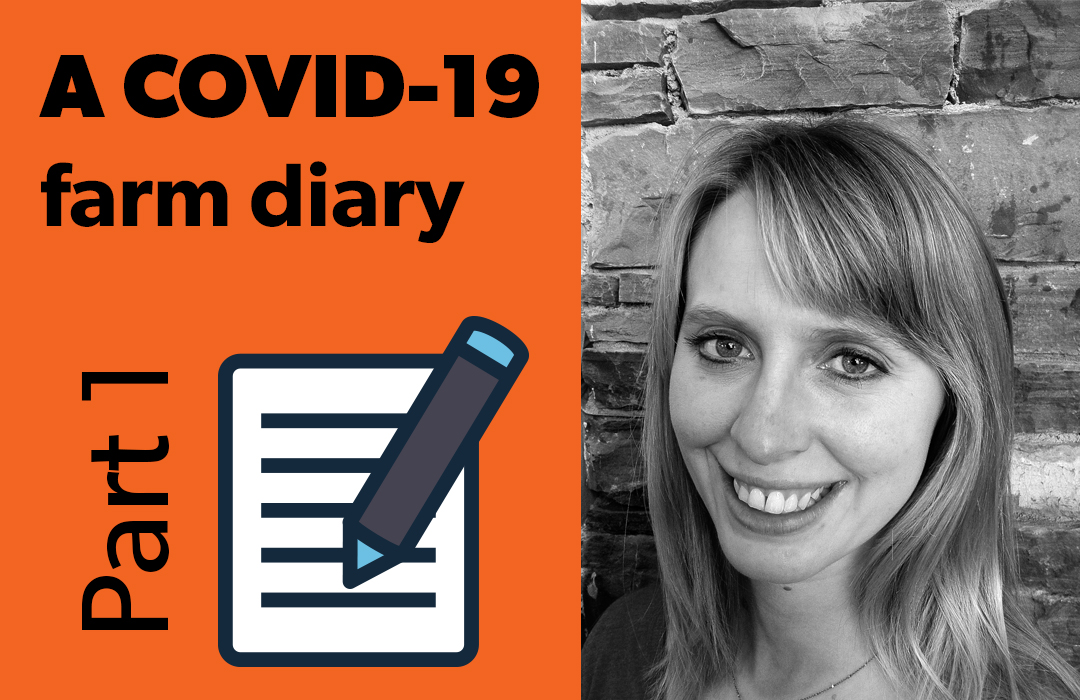SUSTAINABILITY PROJECT GATHERS ON-FARM INPUT
BY IAN DOIG • PHOTO: PIXABAY
Farmers tend to roll their eyes at mention of the word “sustainability.” It’s a topic the whole world wants to address lately, but farmers generally feel they’ve been left out of the discussion. In a July report by the Canadian Agri-Food Policy Institute (CAPI), farmers take the lead in a rethink and reset of the ag sustainability agenda. GrainsWest spoke with CAPI managing director Tyler McCaan about the guidance provided by the 720 Canadian farmers who contributed to Navigating the Path to Sustainable Agriculture.
The following interview has been edited for length and clarity.

GrainsWest: How necessary is it that Canadian agriculture gets its approach to sustainable farming policy and practices right?
Tyler McCaan: It’s important for the environment, but it’s also increasingly clear how important it is for the broader health and potential of the sector. If we get sustainability right, we get environment right, but we also get the economics of it right. We think about sustainability policy as an important opportunity to look at how we drive down costs. How do we boost productivity? How do we get into higher value markets? How do we drive more returns to farmers. Getting sustainability right should enable us to do all those things.
The other important thing to remember is when we talk about getting it right, we need to understand that’s going to change and look different over time. Farmers always evolve what they do and the practices they use. Our policy environment and the programs we put in place need to do that, too. As our understanding of the science of environmental sustainability changes, as our understanding of consumer expectations and sustainable value chains changes, as our understanding of broader public pressure changes, we need to adapt and evolve our policies and programs.
This report highlights that is what farmers are looking for. They’re looking for the ability to try things and figure out what works. If something’s not working, try something different.
GW: What did CAPI hope to discover by asking farmers for their perspectives on sustainable farming practices?
TM: The debate today sometimes seems like it’s driven by a narrow set of voices and perspectives. Farmers are a diverse group. It’s not just if you farm in southern Saskatchewan or Northern Ontario, it’s about the way you farm and your business model. We wanted to capture those different perspectives. The report highlights how different some things are, and how similar at the same time.
GW: Did farmers generally welcome the opportunity to discuss this subject?
TM: “Welcome” is an interesting word. Farmers certainly engaged with the survey. We did this in partnership with RealAgriStudies. They included an open-ended comment box at the end of the survey. They got a lot more feedback and engagement in that comment box on this topic than they normally do. I think farmers know how important this issue is, they know that it has potential for a huge impact on their business and they clearly want to engage.
GW: It just seems like the world caught up to this topic recently, but farmers feel it has always been their thing.
TM: Part of the feedback was frustration, this view that farmers aren’t being heard, that they have been committed to the cause of sustainability for a long time. One of the other key messages that really came up was that the lack of a common definition of what sustainable farming is and means. This is a big barrier to progress. Farmers have been talking about how sustainable their approaches are for a long time. They hear government talk about sustainable farming and government probably means something different than what farmers mean. The inability to have a common understanding of what sustainable farming means makes productive, constructive dialogue more challenging.
GW: How do farmers view existing ag sustainability policies and programs?
TM: Clearly, there’s an awareness. We didn’t define sustainable farming in this case, so it was interesting to see the different perspectives around it. But farmers generally view them to be inflexible and insufficient. They prefer an outcome-based approach and feel like they’re not getting it. There’s confusion and a view that regional differences aren’t reflected in the programs. The financial challenges are clearly a barrier, but [farmers feel] there’s a need to look beyond just financial incentives at things like extension services and investment in R&D.
GW: What direction would farmers like to see the industry take?
TM: One of the interesting, important conclusions maybe isn’t a surprise. This recognition that farmers do see themselves as generally responsible stewards of the land, but also see room for improvement. Farmers do want to see continued improvement in sustainable farming practices. They’re very aligned, and have a clear commitment in that direction, but want to see a more thoughtful approach. One focused on outcomes and on making actual improvement. And they want to see value chains work together in the space.
GW: What was striking or unexpected about the perspective of the farmers who contributed to the study?
TM: That frustration about the lack of a common definition came across loud and clear. There’s a real interest in exploring different solutions or tools. One of the things we looked at was an interest in non-financial incentives and outcome-based payments. We heard a lot about interest in looking at things differently than what they are today. And a real desire to engage.
There were some interesting findings around what we refer to as sustainable improvers—farmers who view themselves as good stewards of the land but also recognize this room for improvement and performance. In general, younger farmers and smaller farmers were more likely to meet our definition of sustainable improvers.
There’s an interesting dynamic there that should be explored. Why is it that some farmers don’t see that full potential to continue improving sustainability?
GW: How can the ag industry respond effectively to the report’s findings?
TM: The report sets out a series of recommendations, some that won’t be new. One thing we say is we need heterogeneity in our response. We need approaches, policies and programs that recognize the difference between farm sizes, farm types and regions. That’s not a huge surprise. But there really was a recognition we need to look at how we prioritize outcome-based incentives.
Rather than paying farmers just to plant cover crops because that’s what the program does, how do we pay farmers to improve soil organic content? Get away from the practice and focus on the outcome.
And how do we look at going beyond just financial incentives to make sure we’re doing more around extension services around those certification systems, so you are building the value chains that ensure farmers are being rewarded for the improvements they’re making?
GW: What else would you like to emphasize about the report’s conclusions?
TM: This is an evolving landscape. We need to be prepared to evolve and change, and then we need better systems that can incorporate new findings and innovations.
To go back to your first question around getting it right, it really means that commitment to active, adaptive management. Let’s try something, let’s learn from it and change what we’re doing based on what we learn. Let’s continue to build that approach into sustainable agriculture policy in Canada.
To read the report, visit capi-icpa.ca.







Comments